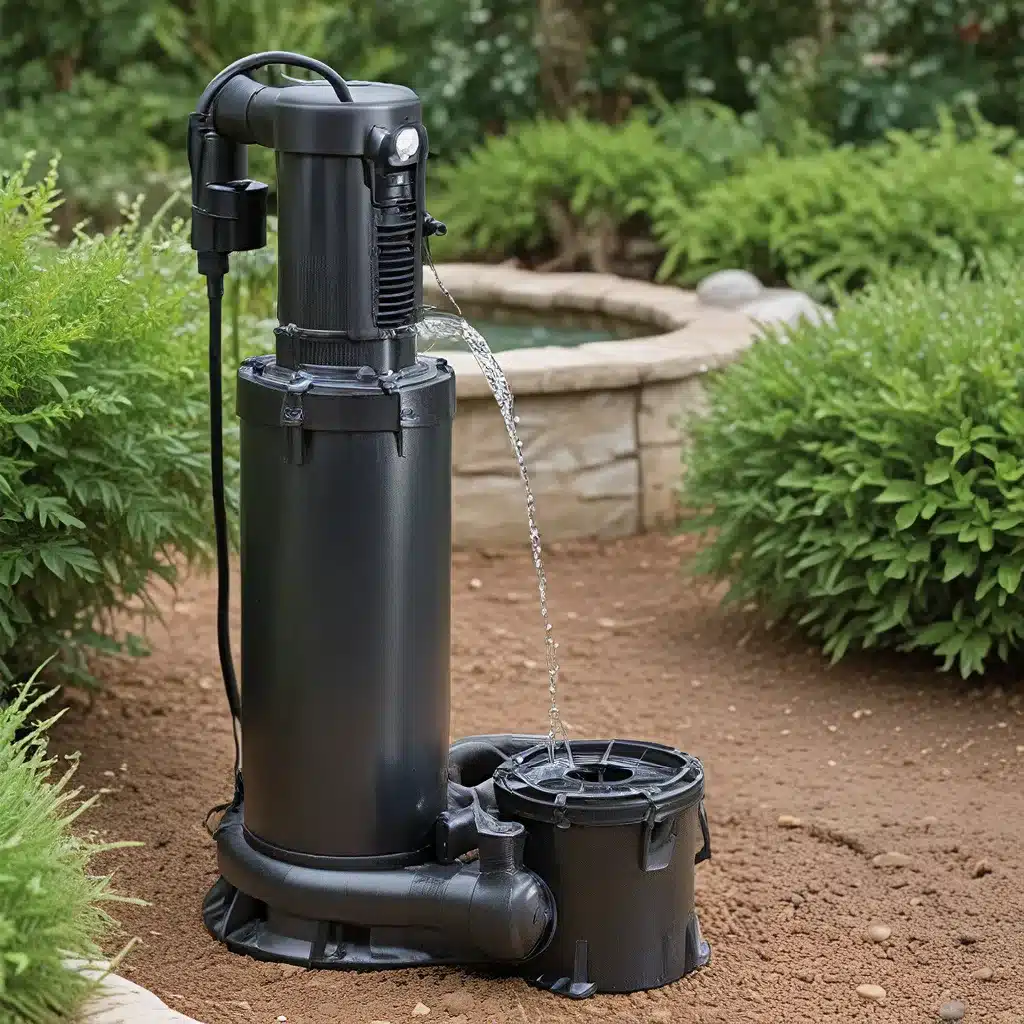
Fountain Design Essentials – Welcome to Fountain Lights
Fountain Design Essentials – Welcome to Fountain Lights

As the heart of any decorative fountain, the pump plays a vital role in circulating water and powering the display. These hardworking little devices are designed to push water through the fountain’s plumbing, creating the mesmerizing jets, cascades, and other effects we enjoy. But just like any other piece of equipment, fountain pumps can encounter issues that impact their performance.
Whether you’re dealing with reduced flow, strange noises, or a complete pump failure, the key to getting your fountain back in top shape is understanding the potential problems and how to address them. In this comprehensive guide, I’ll walk you through the most common fountain pump troubleshooting scenarios, providing step-by-step solutions to get your water feature flowing again.
Let’s start by examining some of the telltale signs that your fountain pump may be experiencing difficulties. Paying close attention to changes in the water flow, unusual sounds, or other abnormal behaviors can help you pinpoint the root cause more quickly.
One of the most common fountain pump problems is a gradual decrease in water output. This can manifest as a noticeable drop in the height or volume of the fountain’s spray or streams. There are a few potential culprits behind diminished flow:
Clogged Impeller – Over time, the impeller – the internal component responsible for pushing water through the system – can become clogged with debris like leaves, twigs, or mineral buildup. This obstructs the impeller’s ability to efficiently circulate the water.
Worn-out Impeller – Like any mechanical part, the impeller can wear down with extended use. As it becomes damaged or loses its shape, the pump’s performance will suffer.
Restricted Plumbing – Kinks, clogs, or other obstructions in the fountain’s pipes and tubing can create backpressure, reducing the overall flow.
Strange sounds coming from your fountain pump are another red flag that something may be amiss. Listen closely for:
Grinding or Scraping Noises – These often indicate an issue with the impeller, possibly a foreign object caught in the mechanism or the impeller itself becoming damaged.
Whirring or Buzzing Sounds – High-pitched whirs or buzzes can signal an electrical problem, like a failing motor or capacitor.
Rattling or Knocking Sounds – Loose or worn-out components within the pump housing can manifest as rattling or knocking noises.
In the most severe cases, your fountain pump may stop working entirely, leaving your water feature high and dry. A complete pump failure is typically caused by one of the following issues:
Electrical Malfunction – Problems with the power supply, wiring, or internal electrical components can cause the pump to stop functioning.
Overheating – If the pump has been running continuously for too long, it may overheat and shut down as a safety measure.
Mechanical Breakdown – After extended use, the pump’s internal mechanisms, like the bearings or seals, can wear out and fail, rendering the unit inoperable.
Now that we’ve covered the most common fountain pump issues, let’s dive into how to diagnose and resolve them.
When you notice a gradual decline in your fountain’s water output, start by inspecting the pump’s impeller. Carefully remove the pump housing and check for any debris or buildup that may be obstructing the impeller’s movement. Use a soft-bristled brush or cloth to gently clean the impeller, being careful not to damage the delicate blades.
If the impeller appears to be in good condition, the next step is to examine the plumbing. Trace the water’s path from the pump to the fountain’s nozzles, jets, or other features. Look for any kinks, clogs, or restrictions that could be inhibiting the flow. Use a garden hose or other tool to flush out any debris that may have accumulated in the pipes.
In some cases, the impeller itself may be worn down, causing reduced efficiency. Impellers can typically be replaced as a standalone part, so consult your pump’s manufacturer or a fountain specialist to determine the appropriate replacement component.
When your fountain pump starts making strange sounds, it’s important to act quickly to identify the underlying issue before it leads to further damage or a complete breakdown.
If you hear grinding or scraping noises, the impeller is likely the culprit. Carefully inspect the impeller for any foreign objects that may have become lodged in the mechanism. Gently remove any debris, taking care not to further compromise the impeller’s condition.
Whirring or buzzing sounds often point to an electrical problem. Check the power supply, ensuring that the pump is receiving the correct voltage and that the wiring is in good condition. If the issue persists, the pump’s motor or capacitor may need to be replaced by a qualified technician.
Rattling or knocking noises typically indicate loose or worn-out internal components. Disassemble the pump housing and inspect the bearings, seals, and other moving parts for any signs of damage or excessive wear. Replace any compromised components as needed.
When your fountain pump stops working altogether, the first step is to isolate the cause of the failure. Begin by checking the power supply, ensuring that the pump is receiving the necessary electricity. Inspect the cord and plug for any visible damage, and test the outlet to confirm it’s providing power.
If the electrical connections appear to be in order, the issue may lie with the pump’s internal mechanisms. Disassemble the housing and closely examine the impeller, motor, and other critical components. Look for signs of wear, damage, or seized parts that could be preventing the pump from functioning.
In some cases, the pump may have overheated due to prolonged use or inadequate cooling. Allow the unit to cool completely before attempting to restart it. Consider adding a timer or thermostat to your fountain’s setup to prevent future overheating episodes.
If the investigation reveals irreparable damage to the pump’s internal workings, it may be time to replace the unit entirely. Consult your fountain’s manufacturer or a fountain lighting specialist to determine the appropriate replacement pump for your specific model and requirements.
Keeping your fountain pump in top condition requires a proactive approach to maintenance. Regularly inspecting and cleaning the unit can help prevent many of the issues we’ve discussed, ensuring your water feature continues to operate smoothly.
Here are some best practices for fountain pump maintenance:
By staying vigilant and proactively maintaining your fountain pump, you can help ensure your water feature continues to enchant and delight for years to come.
Remember, while I’ve covered the most common fountain pump issues, every situation is unique. If you encounter a problem that doesn’t seem to fit neatly into the troubleshooting scenarios outlined here, don’t hesitate to reach out to a fountain lighting expert for personalized guidance. With the right knowledge and a little bit of elbow grease, you can keep your fountain flowing strong.
Share to :
Subscribe to our newsletter for the latest in fountain design, innovative lighting ideas, and exclusive tips straight to your inbox. Join the community shaping the future of water features.

Rapid delivery to your doorstep.

Excellence in every product.

Great value for your investment.

Assistance at any hour.
Fountain Lights — Illuminating creativity in every splash!
Copyright © 2023. All Right Reserved